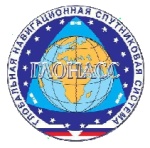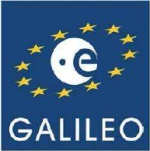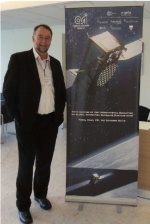FIG Vice President Matt Higgins Attends the Fifth Meeting of
the International Committee on Global Navigation Satellite Systems
(ICG-5)
Turin, Italy, 18-22 October 2010
|

Participants of the meeting |
Introduction
The Fifth Meeting of the International Committee on Global Navigation
Satellite Systems (ICG) was held in Turin, Italy from 18 to 22 October 2010.
The ICG has been formed as a result of recommendations of the UN Committee
on the Peaceful Use of Outer Space (COPUOS), as ratified by the General
Assembly of the UN. The United Nations Office for Outer Space Affairs (UN
OOSA) acts as the secretariat for the ICG. It should also be noted that FIG
has an MoU with UN OOSA.
The International Federation of Surveyors (FIG) is an Associate Member of
the ICG and I was there as the FIG representative and as Co-Chair of Working
Group D of the ICG. Mikael Lilje, the incoming Chair of FIG
Commission 5 on Positioning and Measurement for the period 2011 to 2014, was
also at the meeting as FIG’s representative on Task Force D1 on Geodetic
References.
Joint Statement from ICG-5
At the end of each meeting, the ICG issues a Joint Statement outlining
the highlights of the work of the ICG and any major developments. The
overview presented by the Joint Statement from ICG-5 will not be repeated
here but is included in this report as
Attachment A.
Various presentations were made at the plenary sessions and working group
sessions of the meeting and they form a very useful snap shot of the state
of the art with the various GNSS and also with issues across key user
groups. The Joint Statement, Working Group Reports and all of the
Presentations made at ICG-5 are now available on the ICG Information portal.
See
www.oosa.unvienna.org/oosa/en/SAP/gnss/icg/meetings.html).
Providers Forum Joint Statement from ICG-5
A key part of the membership of the ICG is the so-called “Provider’s
Forum”. A summary of the 6th Meeting of the Provider’s Forum held in
Turin is also available on the ICG Information portal.
See
www.unoosa.org/pdf/icg/2010/pf/PROVIDERS_FORUM_SUMMARY-22_October_2010.pdf
Reports on the Status of All of the Major GNSS Sub-systems
The system providers are at the core of the overall work of the ICG and a
feature of the first Plenary Session of the ICG is a series of presentations
on the status of all of the major GNSS sub-systems. Presentations also
outline the views of each of the system provider nations on the issues of
Compatibility and Interoperability. System developments to note at ICG-5
include:
The Russian Federation continues on track to complete the
GLONASS constellation in coming months:
- Russia also presented their plans for transition to
supplement their current FDMA signals with new CDMA signals;
- The status of Russia’s Space Based Augmentation System
(SBAS) known as the System for Differential Correction and
Monitoring (SDCM) was also outlined;
- An interesting development were several orbit configurations
being considered for further augmentation to GLONASS to give
better regional coverage over Russian territory, along the lines
of Japan’s QZSS.
|
 |
China P. R. presented the planned phases of Beidou including:
- Phase 1: 2000 to 2003 saw the launch of 3 Geostationary
orbit satellites (GEOs);
- Phase 2: Commenced in 2007 with the launch of the first
Medium Earth Orbit (MEO) satellite followed by three Phase 2
GEOs and then in August 2010, the first ever GNSS satellite
launched into an Inclined GeoSynchronous Orbit (IGSO). Since the
meeting the fourth GEO has been launched and another IGSO is
planned for launch in December 2010, bringing the Phase 2
deployment to 7 satellites. The
completion of Phase 2 is planned for 2012 and will bring the
constellation to 5 GEOs, 5 IGSOs and 4 MEOs;
- Phase 3: In 2012 Beidou will begin transition from regional
coverage to a truly global GNSS with the constellation reaching
5 GEOs, 3 IGSOs and 27 MEOs in the 2018 to 2020 timeframe;
- Latest plans for the Beidou signals structures were also
presented;
- China also released a video on Beidou, which can also be
viewed at the Beidou website.
|
 |
European Community presented progress with EGNOS (its SBAS)
and its
Galileo GNSS:
- Galileo seems to be back on track with the deployment of 4
Initial Orbit Validation Satellites and Ground Segment coming
during 2011;
- Initial Operational Capability with 18 satellites is planned
for 2014/15 and Full Operational Capability with 30 satellites
by 2016/17.
|
 |
Japan presented their progress featuring the recent launch of
their first QZSS satellite.
- In a later presentation, JAXA also continued to show strong
commitment to their proposal that was accepted by ICG in 2009
for a Multi-GNSS demonstration project in Asia and Oceania;
- JAXA is working with a leading manufacturer to develop 30
receivers (216 channel, Javad Delta-G3Ts) capable of tracking
the QZSS and other Multi-GNSS signals. Those will be made
available for a reference station network as a key part of the
demonstration project.
|
 |
India presented an update on its space based augmentation to
GPS known as GAGAN and the planned independent Indian Regional
Navigation Satellite System (IRNSS)
- GAGAN will have 3 GEO Satellites; 2 operational and 1
in-orbit spare navigation payload;
- IRNSS Phase 1: 7 satellite constellation and corresponding
ground segment with coverage of Indian territory and 1500 km
beyond. 3 GEO and 4 IGSO satellites launched on indigenously
developed Indian PSLV.
- First satellite launch by second half of 2011.
- Full constellation completion by mid 2014;
- IRNSS Phase 2: Space segment proposed to be augmented with 4
more satellites to make an 11 satellite constellation with
better coverage and accuracy.
|
 |
| Of course as well as all of these new developments, the
USA
continues to operate GPS at high service levels for performance and
reliability. The USA presented a comprehensive overview of GPS
status and future development as well as the significant array of
infrastructure now in place to augment and improve GPS, including
the Wide Area Augmentation System, Local Area Augmentation System,
National DGPS System, National CORS Network and NASA's Global
Differential GPS Service and TDRSS Augmentation Service for
Satellites. |
 |
Other Issues to Note from the Meeting
There were many other interesting presentations, discussions and
decisions at the meeting and the following is an outline of some that the
author found particularly interesting:
- As the use of GNSS grows and especially with increasing
reliance for safety-of-life and mission critical applications,
an issue that is gaining a lot of prominence in the thinking of
system providers and user groups alike is that of interference
(intentional and/or unintentional) to GNSS signals. It is likely
that the ICG will continue to discuss and address such issues in
the work of its Providers Forum and Working Groups;
- The ICG Session on GNSS technology in the era of
multi-systems receivers was particularly good and gave a nice
overview of latest trends in receiver development especially
from the GNSS system provider countries, including the growing
capability in Russia, China and India.
- A good example was the presentation from Unicore
Communications of China on Beidou/Compass and its Unique
Contributions to GNSS - New Applications in China. The
company will be interesting to watch as a potential player
in the emergence of high end professional GNSS equipment
from China and for accelerating the availability of
sophisticated capabilities in consumer devices.
- The issue of improving consumer device capabilities was
also addressed in the presentation from CSR (who offer the
SIRFstar family of chips used in many consumer devices).
Only a couple of years ago most manufacturers saw little
need for sophisticated capabilities (like multi-GNSS or
multi-frequency) in consumer GNSS equipment. However, CSR
believe the driver for consumer devices is now switching
from a need to improve sensitivity to a need to improve
availability. That is seeing GLONASS capability in consumer
devices and extending to hybrid approaches using cellular
and WiFi positioning. CSR predict that the next trend after
exhausting availability improvements is likely to be a
desire for improved accuracy, leading to adaptable dual
frequency consumer receivers (e.g. using L1 and L2 now but
perhaps switching to L1 and L5 in future).
- These presentations and others at ICG-5 showed that
predictions about centimetre accuracy migrating from
surveyors to consumers are not that far-fetched.
Meetings of Working Group D and Its Task Forces
on Geodetic a d Timing References
Of note for the surveying and geodesy community is the
continuation of the work of the Task Forces on Geodetic and Timing
References. The Task Forces are convened under Working Group D, which is
Co-Chaired by John Dow and Ruth Neilan (IAG/IGS) and myself. The detailed
report of Working Group D activities at ICG-5 will be available on the ICG
web site (same link as given above) and the following is a summary of the
major issues covered during ICG-5.
Task Force D1 on Geodetic References
- There were several presentations on Geodetic Reference
issues (available on the web site);
- “Latest Developments with ITRF 2008” (by Zuheir
Altamimi, IERS, France);
- “Recent Development of CGCS2000” (by Prof. YANG Yuanxi
from CNAGA, China);
- “Realization of Terrestrial Reference Frame for GNSS”
(by Hongping ZHANG, Wuhan University, China);
- “The WGS84 Instance of the Template for Global and
Regional Reference System Description” (by Barbara Wiley,
NGA, USA)
- The presentations were followed by discussion of the
progress by system providers in supplying templates
describing their particular Geodetic Reference;
|
 |
- The following templates (at least in draft form) were
available by the end of the meeting:
- World Geodetic System 1984 (WGS84);
- Galileo Terrestrial Reference Frame (GTRF);
- International Terrestrial Reference Frame
(ITRF);
- International Terrestrial Reference System
(ITRS).
Task Force D2 on Time References
- There were several presentations on Timing
Reference issues (available on the web site
- “COMPASS/BEIDOU Time System” (by Prof.HAN
Chunhao, BGIC, China);
- “The GPS Instance of the Template for GNSS
GNSS Timescale Description” (by Ed Powers, USNO,
USA).
- The presentations were followed by discussion of
the progress by system providers in supplying
templates describing their particular Timing
Reference;
- There was also a session in the ICG plenary on
timing issues, centred on the fact that some of the
core timing components for the Galileo programme are
being developed in the Turin area.
Working Group D Outcomes
- The first key outcome from the meeting was that
all System Providers that have not already submitted
templates on their Geodetic and/or Timing References
agreed to do so by the end of November 2010. The
Working Group also discussed the next steps in its
work following publication of the Templates on
References, e.g. issues such as extending to best
practices for system providers and whether the WG’s
role extends further to issues like user education
on Geodetic and Timing Reference topics;
- The second key outcome from the meeting was a
series of recommendations to the ICG on the
following topics:
- WG-D Recommendation #06 - New Name and
Updated Work Plan
- WG-D Recommendation #07 - Multi-GNSS
Demonstration
- WG-D Recommendation #08 - Adoption of the
International Terrestrial Reference System by
the General Conference on Weights and Measures
in October 2011
- WG-D Recommendation #09 - Liaison with Radio
Technical Commission for Maritime Services
(RTCM)
- WG-D Recommendation #10 - Retro-reflectors
for Laser Ranging to GNSS Satellites
- (Full wording of Recommendations available
in the Working Group D Report to the ICG)
- The third point to note was a very useful
discussion about the future work of the Task Forces,
which centred on the idea that ensuring
interoperability is about more than simply
documenting the existing Geodetic and Timing
References used in each of the systems. An example
that was discussed was on the templates were
completed, the Task Forces should perhaps identify
best practices among the current approaches and work
towards some recommended practices to further
improve interoperability in the future.
Next Meetings of the ICG
As outlined in the attached Joint Statement, Japan will host ICG-6 in
Tokyo, from 5 to 9 September 2011. ICG also noted the expression of interest
by China to host ICG-7 in 2012.
23 November 2010
|

